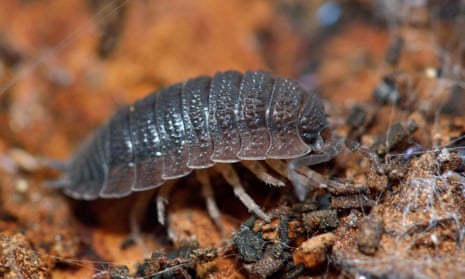The common rough woodlouse Porcellio scaber is one of the five most numerous of 35 species of woodlice that are native to Britain, although there are others that arrived with imported plants and live mostly in greenhouses. Woodlice are remarkable in that they are not insects but crustaceans with 14 legs and an outer shell – their closest relatives being shrimps and lobsters. While they have adapted to life on land, they still need damp conditions to thrive and, like their aquatic cousins, use gills to breathe. If they appear in houses and survive it means there is a damp problem.
Woodlice are harmless and useful creatures in that they eat only decaying vegetable matter and, like worms, are one of nature’s great recyclers. They are helpful in compost heaps and as soil improvers, preferring to live in dark, damp places, often in large colonies. Although some species roll themselves into a ball using their outer casing as a defence against predators including birds, toads and spiders, the rough woodlice plays dead until the threat has passed. Researchers claim individuals have personalities with bold woodlice running off quite quickly and shy ones remaining immobile for longer. Some enthusiasts even suggest they are good to eat, tasting like shrimps – a useful tip if times get hard.

Comments (…)
Sign in or create your Guardian account to join the discussion